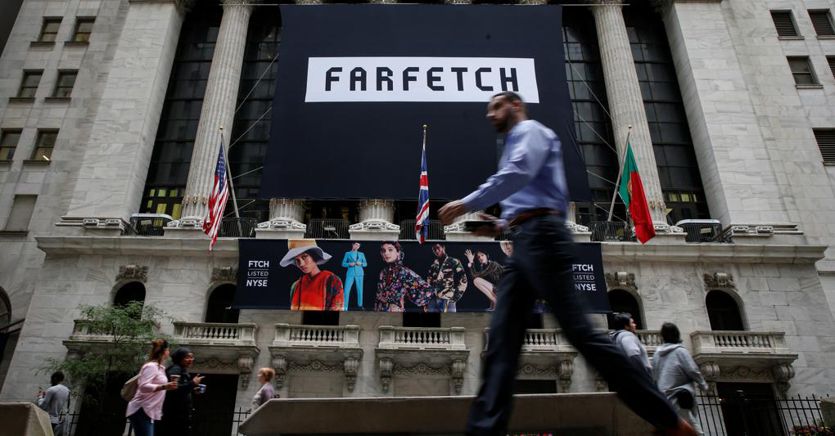Listen to the audio version of the article
According to the sociologist Zygmunt Bauman, former theorist of the liquid society, online purchasing would have protected consumers from situations in which, in fact, they are forced to use “social skills that they do not necessarily possess”, perhaps to resist power of persuasion from a particularly talented salesman. «I will not rush to press the “buy now” button and “confirm” – he wrote – if I have not collected, listed and weighed all the “pros and cons” of each choice and have weighed them with all the “pros and cons” of any other option.” The writing, «I consume, therefore I am», dates back to 2007, the year in which the iPhone debuted on the market and in which José Neves, a Portuguese entrepreneur who moved to London, was preparing to found the luxury sales platform Farfetch (of which he left the leadership on February 15).
According to Altagamma, online wholesale sales are decreasing
Seventeen years, various technological evolutions and revolutions and a pandemic later, luxury multi-brand e-commerce platforms are not experiencing a golden age. Indeed: the forecasts of the Altagamma Consensus 2024 foresee a -1% in sales. The sector has been put in difficulty on the one hand by the fact that human beings, after the Covid two-year period, have re-evaluated the human relationship in the purchasing process. And on the other by the evolution of the geography of world fashion, where the big brands, which have become increasingly bigger, have begun to impose their rules at multiple levels.
Farfetch, listed on the NYSE since 2018 and which went from a capitalization of 23 billion dollars in 2021 to just over 254 million in 2023, last year sold a controlling stake to the Korean giant Coupang which brought in fresh capital (500 million) and saved the company from the crisis, but blew up the deal with Richemont for the purchase of Ynap. In early February 2024, both Neiman Marcus Group and Kering announced they were terminating direct relationships with Farfetch. Also last year Matchesfashion – after years of loss-making accounts – was taken over by Frasers Group.
Brands and platforms: a relationship being redefined
«Covid was a sort of watershed: brands, after the boom in online sales, began to compete directly with e-tailers by investing massively in their platforms – explained Claudia D’Arpizio, senior partner at Bain&Co – and pampering the most important customers with clienteling practices which require, for example, that the sales assistant sends the customer some preview products. Then they began to better control the sales network to avoid a reduction in profitability due to discounts and the parallel market.” Yet according to D’Arpizio: «Brands have an interest in being present in multi-brand stores that work, where their representation is correct and the contents are well looked after». Simone Gentili and Guia Ricci, respectively partner and managing director of Boston Consulting Group, agree: «Brands continue to need multi-brand platforms to reach consumers, but they are changing business model: from pure wholesale to concession, to have greater control above all on prices. As had happened with the department stores.”
The cost of doing business is growing and profits are declining
Over the years the cost of doing business has become much higher for e-tailers. Which, thanks to the increase in energy and logistics costs and a policy of strong discounts to dispose of the “excessive” stocks accumulated in the wake of the boom recorded during the pandemic, have had to sacrifice a share of profitability. «In 2023 a series of issues came to a head – explain Gentili and Ricci -. Multi-brand platforms, post Covid, have often favored volumes and revenues. As demand normalized, they accumulated inventory and began to discount more. This has led to a decline in margins, and greater difficulty in differentiating oneself, because consumer purchasing has become increasingly opportunistic.” There is, however, a way out: “Going back to key skills such as careful choice of assortment, personalization of offers and contents, and targeted marketing.”
